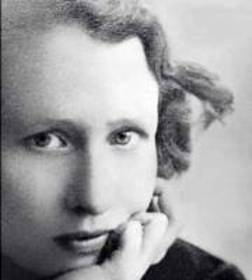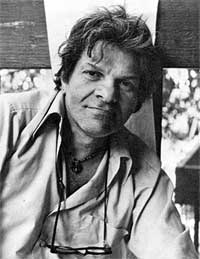…
The five poems and poets that follow are for anyone who enjoys poetry, of course, but they are also for English or ESL teachers who are looking to do a class with some poetry.
I made Vimeos to go with the poems. I made them for the fun of it—and I hope that they are fun—but also these videos should provide some prompts for class discussion, writing and thought. I hope they help make the poetry a pleasurable learning experience for students and are also an added aid for teachers.
Here is a PDF with the five poems used in this lesson:
Five American Poems
…
…
Fog by Carl Sandburg
The fog comes
on little cat feet.
It sits looking
over city and harbor
on silent haunches
and then moves on.
Some thoughts and questions about Fog:
How does a cat resemble the fog? How does the fog resemble a cat?
Other than a cat, can you think of other animals that might enjoy the fog or resemble the fog in some way. Write down the names of three animals explaining why you think they compare well to the fog. Share your animals and your explanations with the class.
 Carl Sandburg
Carl Sandburg
Harlem by Langston Hughes
What happens to a dream deferred?
Does it dry up
like a raisin in the sun?
Or fester like a sore—
And then run?
Does it stink like rotten meat?
Or crust and sugar over—
like a syrupy sweet?
Maybe it just sags
like a heavy load.
Or does it explode?
…Some thoughts and questions about Harlem:
Waiting for the R train one day in NYC, I noticed that one of the girders supporting the platform had been chipped away so that layers of paint resembled (to my mind anyway) a camel. It was like a dream.
Is it the girder’s dream in the subway tunnel to be a camel? Then it could walk freely through a sunny desert.
Some dreams are very possible and some dreams are not, but everyone should be allowed to follow their dreams, don’t you agree?
What are some of the dreams that you would like to accomplish in your life?
Is it ever wrong to follow your dream?
 Langston Hughes
Langston Hughes
……
Sandpiper by Elizabeth Bishop
The roaring alongside he takes for granted,
and that every so often the world is bound to shake.
He runs, he runs to the south, finical, awkward,
in a state of controlled panic, a student of Blake.
The beach hisses like fat. On his left, a sheet
of interrupting water comes and goes
and glazes over his dark and brittle feet.
He runs, he runs straight through it, watching his toes.
Watching, rather, the spaces of sand between them
where (no detail too small) the Atlantic drains
rapidly backwards and downwards. As he runs,
he stares at the dragging grains.
The world is a mist. And then the world is
minute and vast and clear. The tide
is higher or lower. He couldn’t tell you which.
His beak is focussed; he is preoccupied,
looking for something, something, something.
Poor bird, he is obsessed!
The millions of grains are black, white, tan, and gray
mixed with quartz grains, rose and amethyst.
Some thoughts and questions about Sandpiper:
Have you ever played and run away from the waves in the ocean? Why do people like to play in the waves? The sandpiper is there to eat. Why do people come to the ocean?
In what ways do the ebb and flow of Elizabeth Bishop’s lines resemble the ocean folding and coming up the beach?
 Elizabeth Bishop
Elizabeth Bishop
…
Love is not all by Edna St. Vincent Millay
Love is not all: it is not meat nor drink
Nor slumber nor a roof against the rain,
Nor yet a floating spar to men that sink
And rise and sink and rise and sink again.
Love can not fill the thickened lung with breath,
Nor clean the blood, nor set the fractured bone;
Yet many a man is making friends with death
Even as I speak, for lack of love alone.
It well may be that in a difficult hour,
pinned down by pain and moaning for release
Or nagged by want past resolution’s power,
I might be driven to sell your love for peace,
Or trade the memory of this night for food.
It well may be. I do not think I would.
Some thoughts and questions about Love Is Not All:
As I recite Millay’s sonnet, the camera pans back to reveal a target deer whose heart has been ripped apart by arrows. Were they Cupid’s arrows? What is love if it isn’t meat or drink? Is there anything more important than love? Sometimes does love hurt? What do you think?
 Edna St. Vincent Millay
Edna St. Vincent Millay
Two short poems by Gregory Corso
Standing on a street corner waiting for no one is power.
…The spirit of Life
pours thru the death of me
like a river
unafraid of becoming the sea—
Some thoughts and questions about these two short poems:
I love how the happy Monkey on 9th Street seems so independent on the corner waiting for no one. Do happiness and independence go hand in hand? Do you have power? What kind of power is it?
When the Figure on 12th Street vanishes under a coat of paint is it like a bad thought disappearing? Are we glad or sad to see it go?
 Gregory Corso
Gregory Corso
A Lesson Plan for Fog:
…
Here is a lesson plan for Fog by Carl Sandburg. It is a writing lesson for students to think about metaphor and simile and to write poems using them.
Poetry Lesson: Fog by Carl Sandburg
A Lesson Plan for the Sonnet:
...
Edna St. Vincent Millay's poem in this lesson was written in the form of a sonnet. You can take a closer look at the sonnet form here, in a lesson examining one by Robert Frost.
Robert Frost reads Acquainted with the Night (a closer look at the present perfect tense in English)
Dolce stil nuovo!/
Nuovo stil dolce! Thankyou DY…